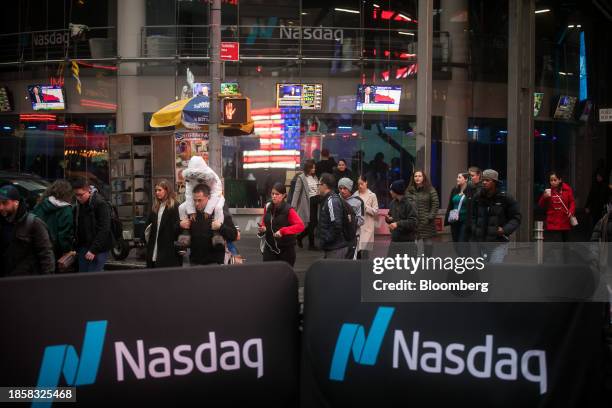The Future Of American Factory Jobs: A Critical Analysis

Table of Contents
The Impact of Automation on American Factory Jobs
The rise of automation technologies is fundamentally reshaping the landscape of American manufacturing. This transformation presents both significant challenges and potential opportunities for American factory jobs.
Automation Technologies and Job Displacement
- Robotics: Robots are increasingly replacing human workers in tasks like welding, painting, and assembly, leading to job losses in numerous factories.
- Artificial Intelligence (AI) and Machine Learning: AI-powered systems are improving efficiency and optimizing processes, further reducing the need for human intervention in quality control, predictive maintenance, and supply chain management.
- 3D Printing/Additive Manufacturing: This technology is revolutionizing production processes, enabling customization and potentially displacing jobs in traditional manufacturing.
The impact is already evident. A recent study by the Brookings Institution projected significant job losses in manufacturing due to automation within the next decade. Industries like automotive manufacturing and electronics assembly are particularly vulnerable. This displacement necessitates a proactive approach to mitigating the negative consequences for workers.
Reskilling and Upskilling Initiatives
Addressing the job displacement caused by automation requires a concerted effort in reskilling and upskilling the American workforce. Numerous initiatives are underway:
- Government Programs: The government offers various programs providing training and funding for workers transitioning to new roles, such as apprenticeships and job training grants.
- Industry Partnerships: Many companies are partnering with educational institutions to develop customized training programs that equip workers with the skills needed for jobs in automated factories.
- Community Colleges and Vocational Schools: These institutions are expanding their curriculum to include training in robotics, AI, and other advanced manufacturing technologies.
While these initiatives are crucial, their effectiveness varies. Challenges remain, particularly in retraining older workers and ensuring that new training programs are aligned with the evolving needs of the manufacturing industry. The success of these programs hinges on their adaptability and accessibility to all affected workers.
Global Competition and the Shifting Landscape of American Manufacturing
Global competition presents another significant challenge to American factory jobs. The rise of manufacturing hubs in other countries has dramatically altered the dynamics of the global manufacturing landscape.
The Rise of Manufacturing in Other Countries
- Lower Labor Costs: Countries like China, Mexico, and Vietnam offer significantly lower labor costs compared to the United States.
- Government Incentives: Many developing nations provide substantial government incentives to attract foreign investment in manufacturing.
- Access to Resources: Proximity to raw materials and other resources can give some countries a competitive advantage.
These factors have led to a significant shift in manufacturing output, with many American companies relocating production overseas to reduce costs. This has resulted in job losses and economic hardship in many American communities.
Strategies for American Manufacturers to Compete Globally
American manufacturers must adopt strategies to remain competitive in the global marketplace:
- High-Value Manufacturing: Focusing on producing high-value goods that require specialized skills and technology.
- Technological Innovation: Investing in research and development to develop new technologies and processes that enhance efficiency and reduce costs.
- Skilled Workforce Development: Attracting and retaining a highly skilled workforce is critical for competitiveness.
Companies like Boeing and Tesla demonstrate successful adaptation by focusing on advanced technology and skilled labor. Government policies, including targeted tax incentives and investments in research and development, are essential to support these efforts.
The Role of Government Policy and Investment in the Future of American Factory Jobs
Government policy and investment play a crucial role in shaping the future of American factory jobs. Strategic interventions can significantly influence the competitiveness and sustainability of the American manufacturing sector.
Government Regulations and Incentives for Domestic Manufacturing
- Tax Breaks and Subsidies: Government incentives, such as tax breaks and subsidies, can encourage companies to invest in domestic manufacturing and create jobs.
- Infrastructure Investments: Investing in modern transportation networks, reliable energy sources, and advanced communication infrastructure is vital for supporting manufacturing.
- Trade Policies: Strategic trade policies can help protect American manufacturers from unfair foreign competition.
The effectiveness of these policies depends on their design and implementation. Careful consideration must be given to ensuring that incentives are targeted effectively and do not create unintended consequences.
Investing in Infrastructure and Technological Advancements
Investing in infrastructure and technological advancements is paramount for boosting American manufacturing's competitiveness.
- Modernizing Infrastructure: Investments in transportation, energy, and communication networks are crucial for enhancing efficiency and reducing costs.
- Research and Development: Government funding for research and development in advanced manufacturing technologies can foster innovation and create high-skilled jobs.
These investments not only enhance the competitiveness of American manufacturers but also create substantial economic benefits, stimulating growth and generating jobs across various sectors.
Conclusion: Securing the Future of American Factory Jobs
The future of American factory jobs hinges on a multi-pronged approach addressing automation, global competition, and government policy. Automation necessitates reskilling and upskilling initiatives; global competition requires a focus on high-value manufacturing and technological innovation; and effective government policies are crucial for providing support and incentives. Proactive measures are vital to securing a vibrant and competitive American manufacturing sector, ensuring the long-term prosperity of American workers and the economy. We urge you to engage in further discussion and research on this vital topic. Contact your elected officials to advocate for policies that support the growth and sustainability of American factory jobs and the American manufacturing industry. Learn more by visiting [link to relevant government website] and [link to relevant industry association].

Featured Posts
-
 To Buy Or Not To Buy Big Bear Ai Stock A Data Driven Approach
May 21, 2025
To Buy Or Not To Buy Big Bear Ai Stock A Data Driven Approach
May 21, 2025 -
 Southern French Alps Weather Update Late Season Snow And Storms
May 21, 2025
Southern French Alps Weather Update Late Season Snow And Storms
May 21, 2025 -
 De Nederlandse Huizenmarkt Een Analyse Van De Claims Van Abn Amro En Geen Stijl
May 21, 2025
De Nederlandse Huizenmarkt Een Analyse Van De Claims Van Abn Amro En Geen Stijl
May 21, 2025 -
 Trans Australia Run Record A New Benchmark
May 21, 2025
Trans Australia Run Record A New Benchmark
May 21, 2025 -
 Big Bear Ai Bbai Stock Analysis An Indicator Based Investment Assessment
May 21, 2025
Big Bear Ai Bbai Stock Analysis An Indicator Based Investment Assessment
May 21, 2025
